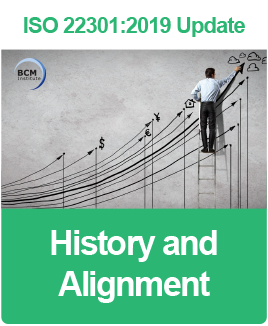Most modern organisation have some form of plan to be activate for contingency to ward off the many threats faced by the businesses of today. Whether it’s a Business Continuity Plan, a Disaster Recovery Plan, an Emergency Response Plan, a Pandemic Preparedness Plan, or any and all of the following, there is usually some manner of contingency planning to keep an organization running even in the midst of disaster.
Purpose of Development an ISO Standard Specifically for BCM
Threats evolve. Cyber-attacks, terrorism, natural disasters, infectious disease – plans can become outdated, outpaced by new threats and made obsolete by the evolving nature of older ones.
Business Continuity Management System (BCMS)
Without a proper BCMS, organizations may find themselves with outdated plans that are no longer effective in handling the threats they are supposed to be able to neuter. Thus, a BCMS aligned with ISO 22301 can vastly improve the effectiveness of plans.
International BCM Standard
The ISO 22301 standard is the international standard for Business Continuity Management (BCM). It provides a best-practice based foundation for managing an effective BCMS for the entire organization., with the goal of safeguarding organizations of any size or industry from a wide range of potential threats, disasters, and disruptions.
The ISO 22301 standard includes the protection of revenue and profits, compliance with regulatory requirements, and a swift and able recovery from disruptive incidents. Additionally, the ISO 22301 also enables the business continuity manager to show senior management that a recognized international standard has been adopted for the organization.
Led by ISO Technical Committee (TE) 223
Developed by ISO/TC 223, Societal security, a technical committee responsible for the development of standards revolving around the protection of society from incidents, emergencies, disasters, caused by human acts, natural disasters, and technological failures.
History of ISO22301
 Series of Country Level BCM Standard
Series of Country Level BCM Standard
Prior to the ISO 22301 standard, the standard for Business Continuity was the British Standard BS 25999-1. It was partially withdrawn in 2012, and fully withdrawn in 2013 with the advent of the ISO 22301 standard. The other standards that were part of this journey was ANZ 5050 (Australian Standard), SS 540 (Singapore Standard) and NFPA 1600 (US Standard).
ISO22301 Published in May 2012
Since its publishing in May 2012, the ISO 22301 standard has become the leading international benchmark for business continuity management systems. According to an ISO survey, over 4000 organizations worldwide hold an ISO 22301 certificate, and they remain very popular among banks, IT service providers, and many other industries.
Upgrading of the ISO 22301:2012

 Updated and Published in October 2019
Updated and Published in October 2019
As of October 2019, seven years after the publication of the original ISO 22301, the ISO committee has released the second version of ISO22301. Dubbed ISO 22301: 2019, most organizations with ISO certifications are expected to fully transition to it by 2022.










![Register [BL-B-3]*](https://no-cache.hubspot.com/cta/default/3893111/ac6cf073-4cdd-4541-91ed-889f731d5076.png)


![Email to Sales Team [BCM Institute]](https://no-cache.hubspot.com/cta/default/3893111/3c53daeb-2836-4843-b0e0-645baee2ab9e.png)
![FAQ [BL-B-3]](https://no-cache.hubspot.com/cta/default/3893111/b3824ba1-7aa1-4eb6-bef8-94f57121c5ae.png)

